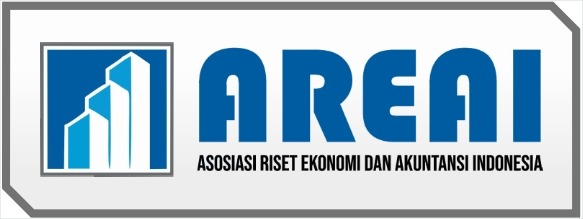Increasing Farmers' Income in the Agricultural Sector in Central Java
DOI:
https://doi.org/10.61194/economics.v2i1.131Keywords:
Agriculture, Infrastructure, Development, Government Policy, Supply Chain Efficiency, Farmers' IncomeAbstract
In the agricultural sector of Central Java, this study examines the relationship between supply chain effectiveness, government policies, infrastructure development, and farmers' income. This study investigates the current status of infrastructure accessibility, government regulations, supply chain dynamics, and income sources through quantitative analyses involving 250 farmers. To verify and examine the correlation between the variables, structural equation modelling with partial least squares, or SEM-PLS, was used. Variations in the level of supply chain efficiency, farmers' attitudes towards government policies, infrastructure quality, and income distribution are shown by descriptive statistics. All proposed hypotheses were supported by the structural model, and the measurement model showed excellent levels of validity and reliability. The results of this study highlight the importance of infrastructure, sensible public policies, and efficient supply chains in increasing farmers' income. There is a discussion of practical consequences and suggestions for stakeholders and policymakers, with a focus on the need for focused action to improve the socio-economic conditions of farmers in Central Java. Although the statistical relationship between these variables is strong, farmers and the government are highly interdependent, so the real implications for the government to improve farmers in Central Java include regulation and distribution similar to other big cities.
References
Agnusdei, G. P., Coluccia, B., Gnoni, M. G., & Miglietta, P. P. (2022). Measuring the impact of transport infrastructure endowment on firms’ performances: the case of Italian agrifood sector. Transportation Research Procedia, 67, 12–20.
Agung Zulfikri. (2022). STRATEGI PENGEMBANGAN UMKM INDUSTRI KULINER BERBASIS MASYARAKAT DI KAWASAN WISATA PANTAI UJUNG GENTENG KABUPATEN SUKABUMI . Nusa Putra .
Banerjee, D., & Sarkar, S. (2023). Agricultural Marketing Infrastructure In Coochbehar District Of West Bengal: An Empirical Study. The Management Accountant Journal, 58(5), 17–20.
Bingawati, B., Wiguna, G., & Evelyn, E. (2023). ANALISA LITERASI KEUANGAN PADA PERILAKU PENGELOLAAN KEUANGAN PETANI KOPI DAN CENGKEH DI JAWA TENGAH. Jurnal Pariwisata Bisnis Digital Dan Manajemen, 2(1), 30–38.
Chusumastuti, D., Zulfikri, A., & Rukmana, A. Y. (2023). Pengaruh Digital Marketing dan Kompetensi Wirausaha Terhadap Kinerja Pemasaran (Studi ada UMKM di Jawa Barat). Jurnal Bisnis Dan Manajemen West Science, 2(02), 83–93.
Conway, G., & Barbier, E. (2023). ■ Pricing Policy and Sustainability in Indonesia. In The Earthscan Reader in Sustainable Development (pp. 151–157). Routledge.
Dixit, A., Routroy, S., & Dubey, S. K. (2023). Measuring the impact of critical factors on government supported healthcare supply chain: an approach towards efficient governance. International Journal of Law and Management, 65(1), 4–19.
Fadianika, A., Nuarsa, I. W., & Sardiana, I. K. (2023). PEMANFAATAN CITRA SATELIT DAN SISTEM INFORMASI GEOGRAFIS UNTUK PEMETAAN KESESUAIAN AGROKLIMAT TANAMAN JAGUNG DI PROVINSI JAWA TENGAH.
Farentina, R. A. (2022). Effect of village funds and other variables on economic growth of Central Java Province 2015–2018. Jurnal Ekonomi Dan Pembangunan, 30(1), 1–14.
Gina, G. A., Mariya, A., Natalia, C., Nispuana, S., Wijaya, M. F., & Phalepi, M. Y. (2023). THE ROLE OF THE AGRICULTURAL SECTOR ON ECONOMIC GROWTH IN INDONESIA. Indonesian Journal of Multidisciplinary Sciences, 2(1), 167–179.
Harsono, I., Purnama, I., Firmansyah, M., Irwan, M., & Sutanto, H. (2024). Pengaruh Belanja Pendidikan, Belanja Kesehatan Dan Belanja Bantuan Sosial Terhadap Indeks Pembangunan Manusia Di Provinsi NTB Tahun 2013-2022. Management Studies and Entrepreneurship Journal (MSEJ), 5(1), 802–810.
Hasan, I., & Habib, M. M. (2023a). Revolutionizing Agriculture Supply Chain Management: Latest Technologies Making a Difference. International Supply Chain Technology Journal, 9(4).
Hasan, I., & Habib, M. M. (2023b). The Role of Smallholder Farmers in Creating Sustainable Agricultural Supply Chains: A Bangladesh Perspective. International Supply Chain Technology Journal, 9(6).
He, Y., Yu, Y., Guo, X., & Li, D. (2023). Government subsidy and firm’s cost sharing in sustainable agriculture supply chain. International Journal of Food Science & Technology, 58(10), 5530–5548.
Hidayat, A., & Prasetyo, T. A. (2023). Pengaruh Fasilitas Infrastruktur Jalan Raya Di Desa Sumber Rejeki Terhadap Pertumbuhan Perekonomian Masyarakat. Business and Enterpreneurship Journal (BEJ), 4(1).
Higgins, A., Bruce, C., McFallan, S., Chilcott, C., McKeown, A., Williams, L., Ackerman, J., Wulandari, D. Y., Dyer, R., & Le, N. (2023). Enhancing farmer linkages to markets in developing countries through mapping of supply chains and optimising transport. Case Studies on Transport Policy, 11, 100952.
Iskandar, M. J., Prasetyowati, R. E., & Ningsih, D. H. (2022). INCOME DISTRIBUTION OF CORPORATE FARMING MODEL IN CENTRAL JAVA. Agricultural Socio-Economics Journal, 22(4), 293–299.
Kagalkar, S., Agashe, A., Paralkar, T. A., Deogaonkar, A., & Bhutda, P. (2023). Narrative Synthesis of the Economic Impact of Agricultural Supply Chain and Distribution Networks on Output. Journal of Law and Sustainable Development, 11(2), e643–e643.
Kaur, K., & Kaur, M. (2023). Rural Infrastructure ant Its Impact on Agricultural Growth in India: An Empirical Analysis. ESI Preprints, 14, 334.
Lazarova, E., Pavlov, P., Petrova, M., & Shalbayeva, S. (2023). Analysis and Assessment of Infrastructural Potential in Rural Territories. Economics. Ecology. Socium, 7(1), 1–14.
Mačiulytė-Šniukienė, A., Butkus, M., & Szarucki, M. (2022). Infrastructure in the framework of production functions: evidence of EU member states at the regional level. Technological and Economic Development of Economy, 28(6), 1897–1914.
Mazhar, R., Xuehao, B., Viira, A.-H., Stamenkovska, I. J., Nacka, M., Azadi, H., & Wei, Z. (2022). Farmers’ Participation in Modern Supply Chains: The Case of Mandarin Profitability in Punjab-Pakistan. Horticulturae, 8(11), 1041.
Mulyata, J., & GWA, J. (2020). The management of government projects in Nigeria: a case study of fertilizer procurement and distribution to farmers in Nigeria.
Mwangakala, H., Mongi, H., Ishengoma, F., Shao, D., Chali, F., Mambile, M. C., & Julius, B. (2023). Harnessing Emerging Digital Technologies to Promote Equitable, Diverse and Inclusive Supply Chains: A Scoping Review.
Nnyanzi, J. B., Kavuma, S., Sseruyange, J., & Nanyiti, A. (2022). The manufacturing output effects of infrastructure development, liberalization and governance: evidence from Sub-Saharan Africa. Journal of Industrial and Business Economics, 49(2), 369–400.
Nurjati, E. (2022). The Determinants of Food Consumption Expenditure in Central Java. Jurnal Ekonomi Pembangunan: Kajian Masalah Ekonomi Dan Pembangunan, 23(1), 63–78.
Panggabean, Y. B. S., & Arsyad, M. (2022). Sustainability agricultural supply chain in improving the welfare of North Toraja Arabica coffee farmers. IOP Conference Series: Earth and Environmental Science, 1107(1), 12065.
Prihadyanti, D., & Aziz, S. A. (2023). Indonesia toward sustainable agriculture–Do technology‐based start‐ups play a crucial role? Business Strategy & Development, 6(2), 140–157.
Purnamasari, M., Huang, W.-C., & Priyanto, B. (2023). The Impact of Government Food Policy on Farm Efficiency of Beneficiary Small-Scale Farmers in Indonesia. Agriculture, 13(6), 1257.
Stephens, S. (2001). Supply chain operations reference model version 5.0: a new tool to improve supply chain efficiency and achieve best practice. Information Systems Frontiers, 3, 471–476.
Sukayat, Y., Setiawan, I., Suharfaputra, U., & Kurnia, G. (2023). Determining factors for farmers to engage in sustainable agricultural practices: A case from Indonesia. Sustainability, 15(13), 10548.
Supendi, S. (2022). Government Strategic Policy in Agricultural Development. Transparansi: Jurnal Ilmiah Ilmu Administrasi, 5(2), 23–29.
Tripathi, P. K., Singh, C. K., Patel, S., Singh, R., & Deshmukh, A. K. (2023). Designing Demand Driven Price Sensitive Supply Chain Model for Indian Farmers. Vision, 09722629231178649.
Vanditha, M., Hegde, S. R., Snehith, K., Prasad, A. S., & Madappa, E. A. (2023). Agricultural Supply Chain Management System Using Blockchain. 2023 International Conference on Recent Trends in Electronics and Communication (ICRTEC), 1–4.
Wang, W., Harsono, I., Shieh, C.-J., Samusenkov, V., & Shoar, S. (2023). Identification of critical paths leading to cost claims for underground metro projects: a system dynamics approach. Kybernetes, 52(5), 1861–1878.
Wicaksono, B. B., & Audinasari, R. (2023). Pembangunan Pertanian di Provinsi Jawa Barat: Analisis Kebijakan fiskal: Analisis Kebijakan Fiskal. Jurnal Riset Ilmu Ekonomi, 3(1), 1–13.
Widowati, E. H., Risandewi, T., Hasiholan, B., & Pertiwi, M. D. (2023). Food Logistic System Policy in Central Java. IOP Conference Series: Earth and Environmental Science, 1177(1), 12018.
Widyatmanti, W., & Umarhadi, D. A. (2022). Spatial modeling of soil security in agricultural land of Central Java, Indonesia: A preliminary study on capability, condition, and capital dimensions. Soil Security, 8, 100070.
Zuhri, N. M., Rahayu, E. S., Kusnandar, K., & Harisudin, M. (2023). Corn Supply Chain in Central Java Province: Marketing Channel Efficiency and Chain Institutional Performance Approach. Journal of International Conference Proceedings, 6(1), 165–181.






